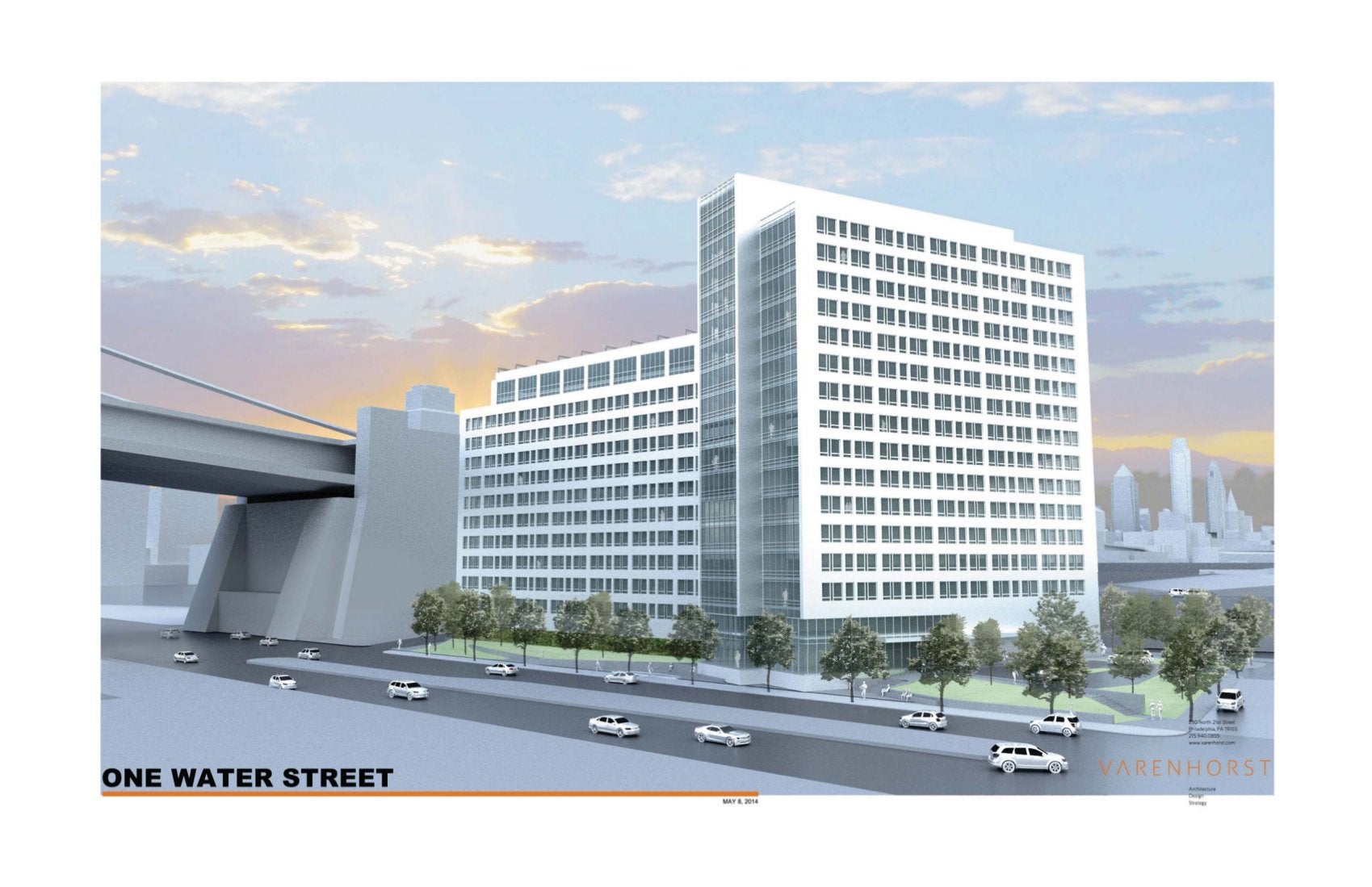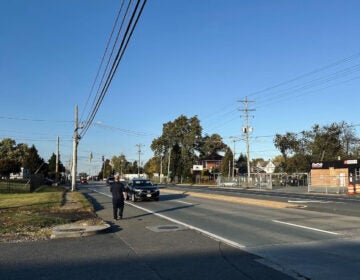Waterfront apartment project completes design review

One Water Street, the first major private, by-right development to be proposed for the Central Delaware Waterfront since a new zoning overlay intended to implement the master plan was enacted last summer, completed the Civic Design Review process on Tuesday.
The project, which requires no zoning variances, had an initial meeting at the CDR committee in May. At that meeting, the committee asked the developer, PMC Property Group, and its architect, Stephen Varenhorst, to work on the building facade, improve the public space (for which the developer is receiving a height bonus) and improve the connection across Columbus Boulevard to the waterfront.
In addition, the committee wanted to verify that the developer had designed the building so as to actually earn the height bonuses it is claiming, and asked the builders to consider making improvements to Water Street.
On Tuesday, the Planning Commission staff verified that the height bonuses were earned, and the developer committed to working toward restoring Water Street to its historical shape, with cobblestones and granite curbs.
The developers also said they had considered the Columbus Boulevard crosswalk situation, and, through conversations with PennDOT, concluded that the residents at the building would just have to use the existing crosswalks at stoplights to the north and south of the property. If a stoplight were to be put in at the point of the property, PennDOT would have to reprogram the traffic signals the length of the Boulevard.
Anita Toby Lager, a landscape architect and CDR Committee member, said that might be the right idea: with 250 new apartments coming onto a single property on the waterfront, it might be a good time to “re-signalize” Columbus Boulevard. The developers said they would discuss it again with PennDOT.
The developers also received praise for providing mixed-income housing on the site, another feature which earned them a height bonus.
Cecil Baker, an architect and committee member, criticized the public space provided at the property, for which the developers are receiving a height bonus. Baker said the public space being provided along Columbus Boulevard doesn’t represent something that the public will actually use. The developers disagreed.
Nancy Rogo-Trainer, the committee chair, encouraged the developers and architect to continue thinking through the project’s connections to the public realm after the design review was concluded. The design review was then concluded.
PlanPhilly asked Stephen Varenhorst whether the project was improved by the Civic Design Review process.
“I think it made us conscious and aware of bigger issues that are involved in the development,” Varenhorst said, “like the link to the waterfront, crossing the streets and so forth, and [the committee] kept their comments within the public realm, and I think in that sense it was productive.”
Were any changes made to the design between the first and second CDR meetings?
“No,” he said.
WHYY is your source for fact-based, in-depth journalism and information. As a nonprofit organization, we rely on financial support from readers like you. Please give today.






